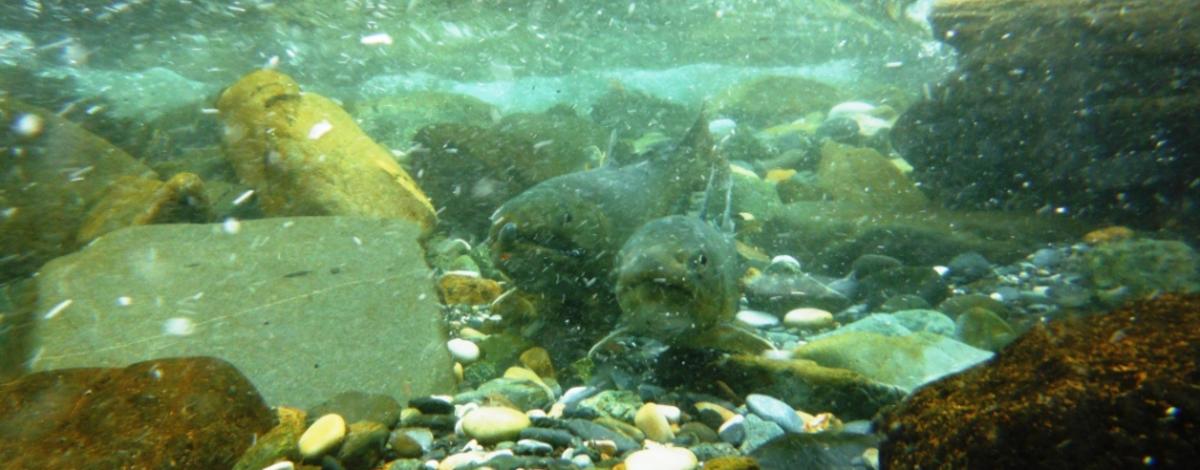This time of year Fish and Game fisheries staff have provided a variety of cool stories about our work on Chinook redd walks to track those populations. But, Chinook aren’t the only native fall spawner we track using this method, bull trout is another native Idahoan that has their spawning nests counted each year to monitor the status of our populations.

Unlike Idaho’s Chinook, our bull trout do not venture as far as the ocean, but that doesn’t mean they don’t go on long-migrations away from spawning areas in some parts of Idaho. These large migratory fish which grow big in our lakes, reservoir, and rivers can often have large redds which are similar in size to their ocean-going cousins. But as a previous article highlighted, we also have bull trout that spend their whole lives in small tributary streams, needless to say, their redds (spawning beds) are quite a bit smaller than salmon or migratory bull trout.

Each year during September and October Fish and Game crews and partners such as the U.S. Fish and Wildlife Service, U.S. Forest Service and tribes head out to Bull Trout spawning streams to count redds. We have long-term datasets in drainages across Idaho such as Lake Pend Oreille and Coeur d’Alene as well as the Clearwater and Salmon rivers to track trends in these populations. Redd counts can be tricky because of the variety of sizes of redds and the fact that redds are often associated with in-stream log jams and complex habitat. But, maintaining consistent survey areas and timing of redd walks allows managers to track trends in these valuable populations.
Fortunately, bull trout redd count trends in many of these drainages have been stable since walks were started. But, in some places such as the St. Joe River and recently in the North Fork Clearwater we’ve seen declines in redds. These declining trends tell us we need to keep a closer eye on these specific populations in the form of other monitoring such as snorkel surveys or electrofishing in spawning tributaries to monitor juvenile fish as well as monitor downstream in areas where the adults grow up.

Monitoring different parts of the Bull Trout life cycle then helps managers make decisions on restoration actions or additional monitoring to help areas with declines change those trends and keep areas with stable trends healthy for the future.
Keep an eye out for future articles discussing recent monitoring and research on Idaho’s bull trout population later this fall.
For more stories about Idaho’s bull trout click here.

